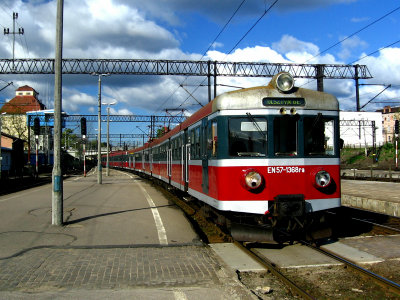About the five languages whose view of the world changes

ByWoodleywonderworks
About the world6900 languagesIt is said that there is "the language whose center of the world is not yourself", "the language which time flows from the east to the west", "the language that expresses colors by metaphor", "the language that requests evidence" "2" There are also very special languages such as "no language". Knowing such five languages, linguistsBenjamin WorfI can feel the hypothesis that "language influences that person's way of thinking" proposed by the company.
5 Languages That Could Change the Way You See the World - Facts So Romantic - Nautilus
http://nautil.us/blog/5-languages-that-could-change-the-way-you-see-the-world
Language in which the center of the world is not myself: Goo-imidil
People who speak English express their world around themselves. However, the Aboriginal Aborigines of the Australian Queensland Indigenous People's Goo-ImidilGoo-ImidilIs not a relative front, rear, left, right, absolute(PDF notice) Represented in the east and west north and southTo do. For example, in English, "You can move to the left side of me?" In Goo-Imidil language, it is "Can you move to my west?" Since the young age, the goog · imidir talks as a linguist Doitcher, and as a child speaking English masters the usage of tense, the child who speaks Goo-imidile is a young child It is about learning how to use east, west, north and south by about time.

ByChris Lofqvist
Also, if a person who speaks Goo-Imidile speaks attention backwards, not saying "Be careful of behind me" or something else, be careful as if the other person you speak does not exist there I will try to point it.Other studiesSo, people who use languages expressing places using front, rear, left and right say that they have fancy space memory and moving technology. However, Deutscher points out that the Google and Imidyles can not say that they can not understand the front, rear, left and right concepts even if they do not have relative front, rear, left and right words.
◆ Languages in which time flows from the east to the west: Kuwaku-za'eolle
Mr. Lela of Stanford's linguist and Mr. Alice of Berkeley University are studying the people of Pormpuraa who speak Kuku-za-ayele. The Kuku-za'eolle used by Pormpuraa seems to express places in the east-west north and south as well as the Go-Imidir language, and furthermore "The east, west, north and south are affecting time as wellWe also have the characteristic of being. As an experiment, I asked people talking to Kuwaku-za-ayele to arrange the cards in chronological order on a table showing how to take people's age, how to grow crocodiles, how to eat bananas. The result is that the person speaking KUKU-ZAO-A-YORLE placed the table facing north or south and arranged cards in order of time series from the east to the west. On the other hand, English speakers arranged cards in chronological order from left to right.

ByRam Karthik
In the experiment, we are doing the test without telling which direction the table is facing, and the person who speaks KUKU-ZA-A-YORLE spoke naturally the position of east-west north and south to express time.
◆ Language in which color is represented by metaphor: Yelli Danie
According to linguists, individual languages had words that represent human's perceptible color transitions (visible spectrum), but in 2001 psycholinguisticsMr. Steven's studyAccording to Papua New Guinea's Rosell IslandYelli DanieWe have announced that there is no color term that points to a specific color. For example, in order to express red, people on Rosell is expressed as "mtyemtye" derived from mtye representing red parrots. When expressing black, we expressed it as "mgidimgidi" from mgidi derived from the night. In addition, the grammar of Yeri Danie is often expressed in a metaphor like "he is white" rather than "his skin is white like a parrot".
The art of Rosell Island does not use unnatural dyes, and likes toneless colors and patterns. People on Rosell Island do not possess special visual capabilities, but there is a possibility that expressing different colors from other languages may have a big influence on the recognition of the world.

ByStròlic Furlàn - Davide Gabino
◆ Languages requiring evidence: Matz
The people of Matze who live in Nuevo São Ju of Peru pay attention to the exchange of correct information at the time of talking. For example, if asked how many apples you have, Martie 's answer "There were four when I last saw the apple that was in the basket". Unless you can see the apple directly, there is a possibility that someone who answered the number of apples may have "no evidence" or "an apple may be stolen" so that "the number of apples is It is recognized by those who speak Maze, that things that it is not accurate are correct.

ByRyan
Mr. David, a linguistA paper on Matse's grammarAccording to it, the people of Maze ask for evidence, such as whether the content to be spoken is correct, how true the information is, and when. Because of these characteristics, people who speak Matza do not have a way to show rumor, myth, and history, but instead they are telling the history, etc. as "information guessed in the past" instead.
◆ Language without "2": Pedahan language
Daniel of Manchester University in 2005 is used by Pedahan people living in the AmazonPidahan languageWe published research on. People in Pidahan speak without "number" or "less" such as "few", "color words" and "completed forms", and when expressing the quantity, we express something as "large" or "small". Also, the people of Pidahan do not have an artistic tradition.
Evarett, a linguist, said he would show Pedahan people the sequence of batteries of several batteries and let them recreate the sequence of batteries(PDF attention) ExperimentWe are doing. The result was that we could reproduce the sequence of 2.3 batteries, but it turned out that we could not reproduce the number of more batteries and can not count the number. It is thought that it is not necessary to count the number because it was an action not necessary for the people of Pidahan to live. The situation is changing and it seems that children of Pedahan today are learning how to count Portuguese and numbers.

ByRob.
Related Posts:
in Note, Posted by darkhorse_log







